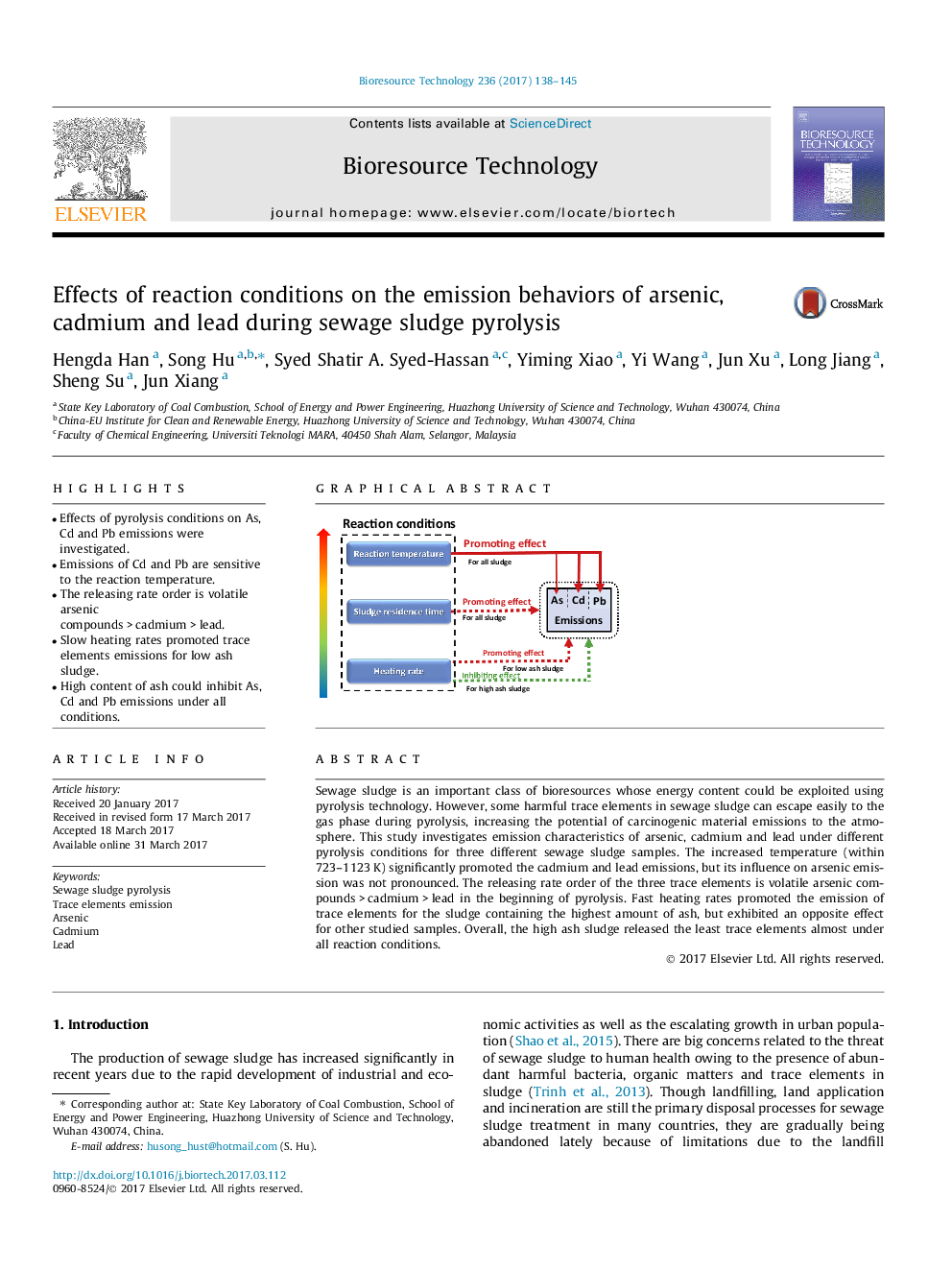| Article ID | Journal | Published Year | Pages | File Type |
|---|---|---|---|---|
| 4997122 | Bioresource Technology | 2017 | 8 Pages |
â¢Effects of pyrolysis conditions on As, Cd and Pb emissions were investigated.â¢Emissions of Cd and Pb are sensitive to the reaction temperature.â¢The releasing rate order is volatile arsenic compounds > cadmium > lead.â¢Slow heating rates promoted trace elements emissions for low ash sludge.â¢High content of ash could inhibit As, Cd and Pb emissions under all conditions.
Sewage sludge is an important class of bioresources whose energy content could be exploited using pyrolysis technology. However, some harmful trace elements in sewage sludge can escape easily to the gas phase during pyrolysis, increasing the potential of carcinogenic material emissions to the atmosphere. This study investigates emission characteristics of arsenic, cadmium and lead under different pyrolysis conditions for three different sewage sludge samples. The increased temperature (within 723-1123 K) significantly promoted the cadmium and lead emissions, but its influence on arsenic emission was not pronounced. The releasing rate order of the three trace elements is volatile arsenic compounds > cadmium > lead in the beginning of pyrolysis. Fast heating rates promoted the emission of trace elements for the sludge containing the highest amount of ash, but exhibited an opposite effect for other studied samples. Overall, the high ash sludge released the least trace elements almost under all reaction conditions.
Graphical abstractDownload high-res image (94KB)Download full-size image
